Wondering where the best places to live in Croatia are? If you’re looking for an enchanting European country with a rich history and pleasant climate yet a low cost of living, then look no further.
Croatia sits along a large strip of the Mediterranean sea with picturesque coastal towns, pristine beaches, and crystal clear waters. Aside from the ocean, the land is fertile, resulting in lush countryside and vineyards serving as a backdrop to the historic cities.
PSSST. Your travel medical insurance can now cover COVID-19!
If you grab SafetyWing Nomad Insurance, it’ll be covered just like other illnesses. I’ve been using it since 2019 and I can assure you it’s the perfect solution for nomads like you and me.
If the priceless scenery is not enough to make you move to Croatia, the low cost of living and relaxed lifestyle will be. Compared to nearby countries like Italy and Switzerland, Croatia is an affordable place to live whether you get a local job or work remotely.
So, which Croatian cities are best suited to expats and digital nomads? From ancient walled cities to majestic islands, let’s explore the best places to live in Croatia.
Zagreb
Zagreb is the capital of Croatia and the largest city in the country. The city is so huge that it is estimated almost a quarter of Croatia’s population resides here.
Therefore, it’s no surprise that Zagreb has the largest expat community.
The capital city boasts impressive historic sites, such as the Gothic, twin-spired Zagreb Cathedral, and the eye-catching 13th-century St. Mark’s Church. In addition, the city’s streets are always bustling, with endless restaurants, vibrant nightlife, and rich cafe culture.
Zagreb is split into two distinct areas: the Upper Town and Lower Town, with 17 districts. Many parts of Zagreb are walkable, such as Tkalčićeva Street.
There are also 19 inner-city tram lines and 120 bus routes throughout the city, so you can travel anywhere without needing a car.
While many expats choose Zagreb because of the abundance of job opportunities, other reasons include the high-quality private hospitals and international schools.
As a result, teaching and healthcare jobs are plentiful for foreigners, along with finance and HR positions in embassies and global companies.
The cost of living in Zagreb is a bit higher than in other parts of Croatia, but it is still lower than in many European countries. If you plan to rent, you can expect to pay between $400 and $550 monthly for a one-bedroom apartment.
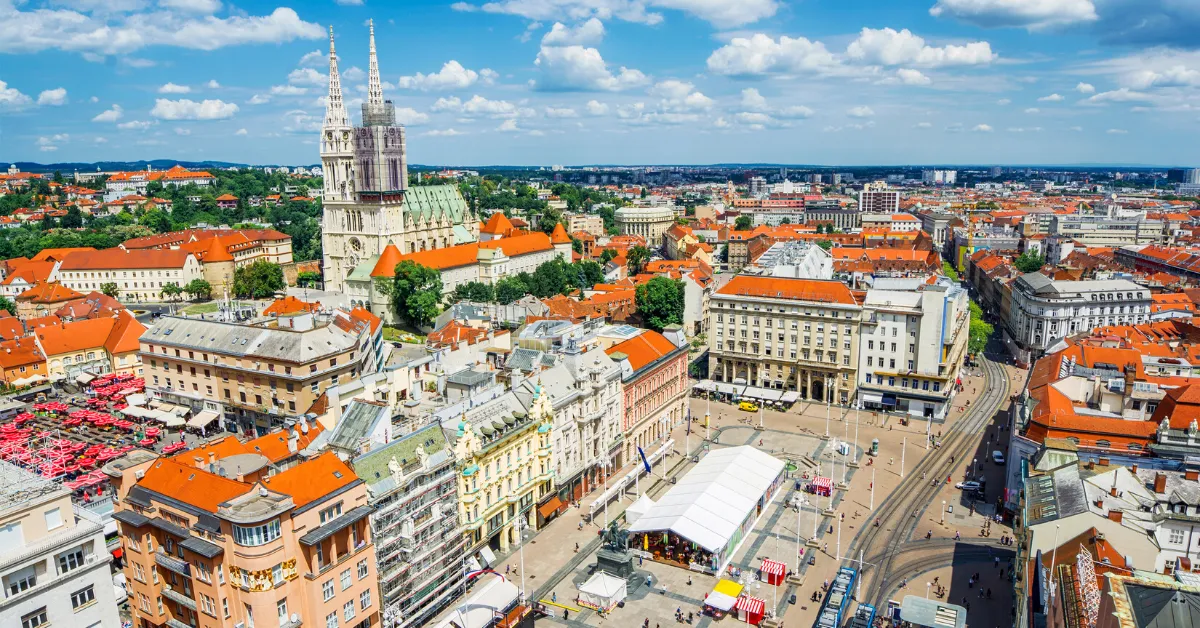
Split
Split is the second largest city in Croatia, located on the eastern shore of the Adriatic Sea and the region of Dalmatia.
The coastal location and stunning medieval old town create an ideal balance between historic and modern, making Split a popular place to visit, live, and work.
There is a large expat community here, but it is predominantly German. Split is also popular with international students on Erasmus.
Plus, as a popular tourist destination, it has a diverse and international feel in the summer months.
The city is also much more vibrant during the summer. There is a buzzing nightlife during this time, and everything is open, albeit the prices are higher.
In the winter, Split is much quieter with not much going on, but prices come down.
There are many new or renovated properties in Split, many of which have a modern and luxurious design. However, because of the fluctuating prices, if you plan to live long-term in Split, it’s best to get a one-year rental contract.
That way, you’ll pay a consistent monthly rate, ranging from $400 to $600 for a one-bedroom apartment, though the closer you are to the sea, the more expensive it will be.
Also, note that if you choose to live in Split, you’ll likely need a car. This is because taxis are expensive and the bus service only caters to the central areas.
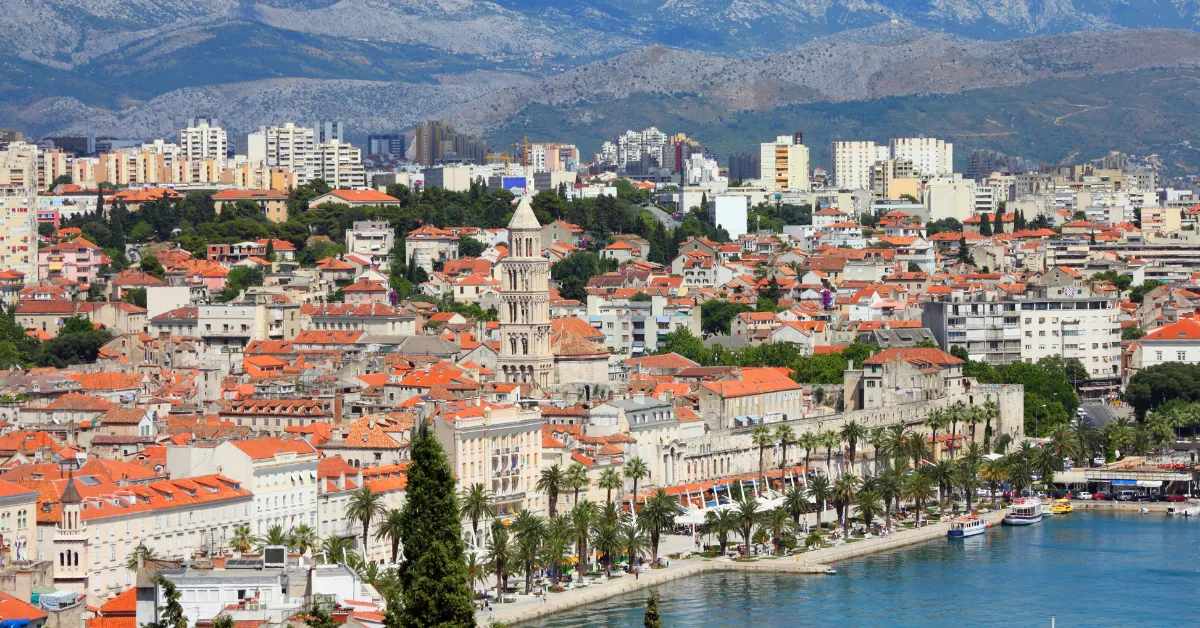
Hvar
Hvar is a small island in the Adriatic Sea, located just off the coast of Split. This stunning paradise is undoubtedly one of the best places to live in Croatia for digital nomads who want to enjoy a relaxed lifestyle and wake up to mesmerizing scenery.
Hvar boasts many picturesque beaches, crystal-clear waters, scenic coves, pretty vineyards, and lush pine forests, so it is perfect for outdoor lovers. It also has an idyllic climate with mild winters and around 300 sunny days a year.
Hvar is a truly luxurious place and favored spot for the wealthy, with an ever-growing superyacht community. There are also many digital nomads residing in Hvar, and it is easy to get by without speaking Croatian.
However, being such a desirable island, finding somewhere to rent or buy can be challenging.
Another possible con is its lack of accessibility to other parts of the country and Europe. However, you can take a high-speed ferry to Hvar in less than an hour.
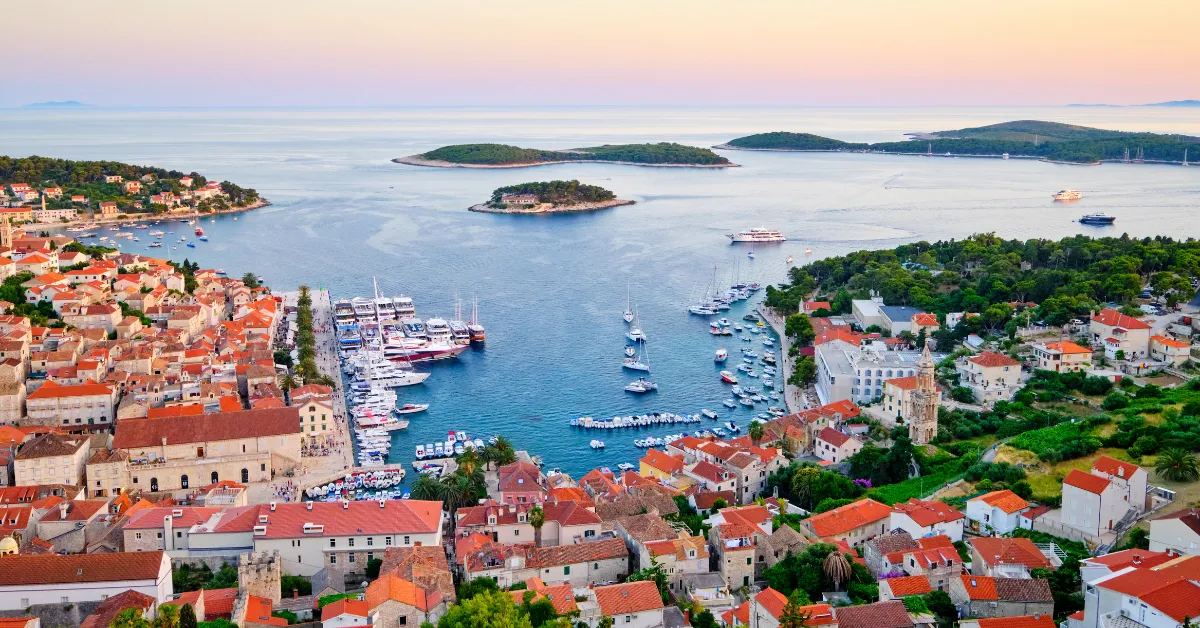
Pula
The coastal city of Pula, located on the Istrian Peninsula, is not only a popular tourist destination but one of the most popular spots for digital nomads living and working in Croatia.
It has a rich Roman history, with many ancient buildings, including a colossal arena similar to the Colosseum.
There is also a protected harbor and some pretty pebble and rock beaches.
Pula is also known for its winemaking, fishing, and gastronomic traditions, making it an excellent place for remote workers to enjoy life’s pleasures.
What’s more, while the most predominant industries are tourism and shipbuilding, there are job opportunities in other sectors if you speak Italian or Croatian.
Another reason remote workers choose Pula over the other cities is that rental prices are significantly lower here. Expect to pay on average $350 a month for a one-bedroom apartment.
Moreover, amenities such as private hospitals, clinics, and large shopping malls make Pula a comfortable place to call home.
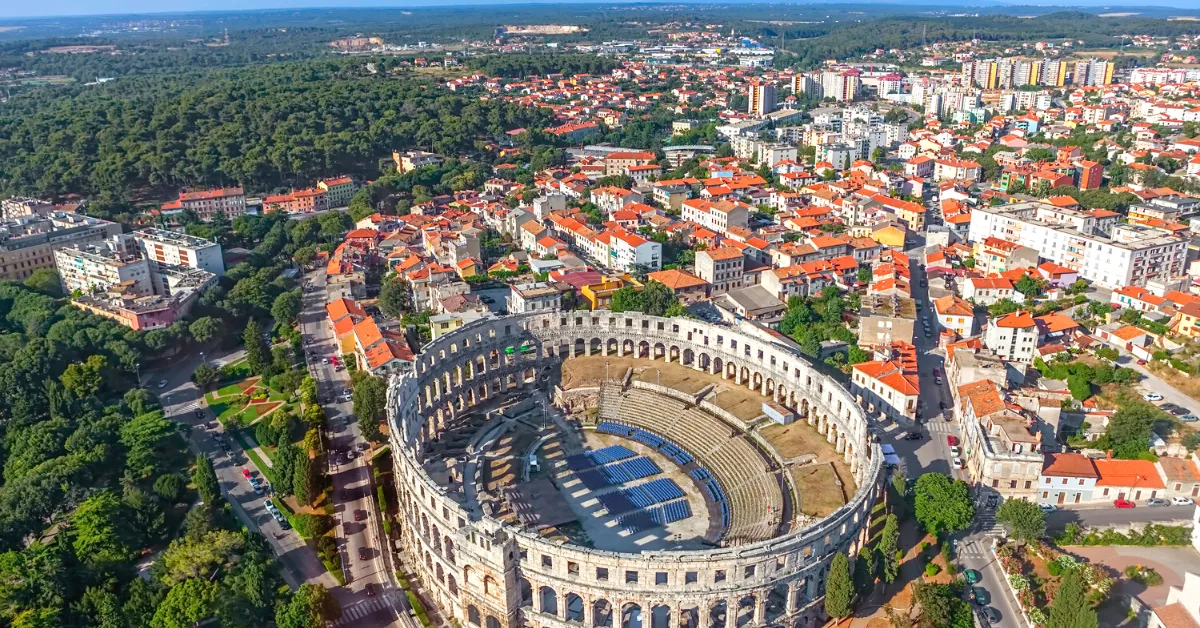
Rijeka
Rijeka is the third largest city in Croatia and is known for the vast number of festivals it hosts each year. The city center is very urban and modern, with private medical institutions and large shopping malls.
Most expats here are Italian, and there is even an Italian high school to serve this community.
The real estate opportunities make Rijeka desirable for foreigners looking to make money in Croatia. The coastal area running west from Rijeka to the small town of Ičići is a huge investment hub with many luxurious villas in development.
Another reason why Rijeka is one of the best cities in Croatia is that, unlike most other places, the atmosphere does not simmer during the winter months.
Rijeka stays vibrant all year round with plenty of things to see and do, including the beaches, historical buildings, and museums.
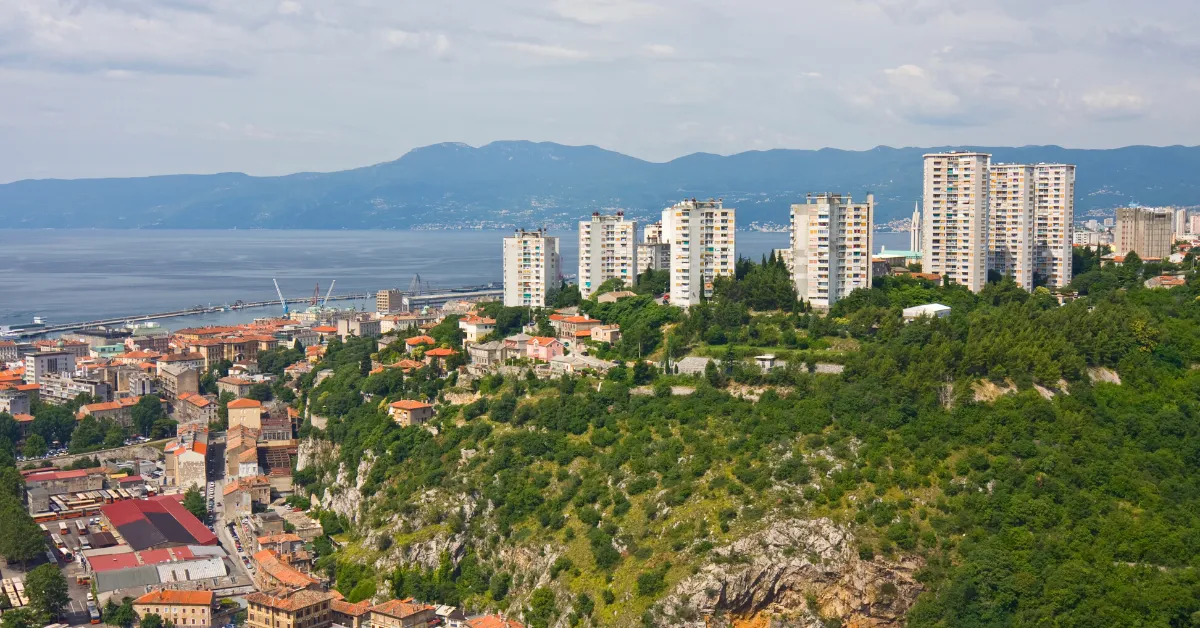
Dubrovnik
Dubrovnik in southern Croatia is an incredibly picturesque historical town overlooking the gorgeous Adriatic Sea.
It is famous because it was the primary filming location for the hit TV series, Game Of Thrones. It also has a distinctive Old Town surrounded by massive 16th-century stone walls.
Despite its rich history, Dubrovnik is more than suitable for modern-day living. The nightlife may not be as vibrant as in the capital city.
Still, there are high-quality restaurants and numerous cultural activities and festivals in Dubrovnik, making it another of the best cities to live in Croatia.
Dubrovnik is a relatively small place with a strong community feel, which can be challenging for expats to feel part of when they first move there. However, the town is very safe, and the locals are kind once they get to know you.
Rental prices are in line with the capital city, but certain things like restaurant prices are considerably lower. However, foreigners have limited job opportunities, so Dubrovnik is best suited to remote workers and digital nomads.
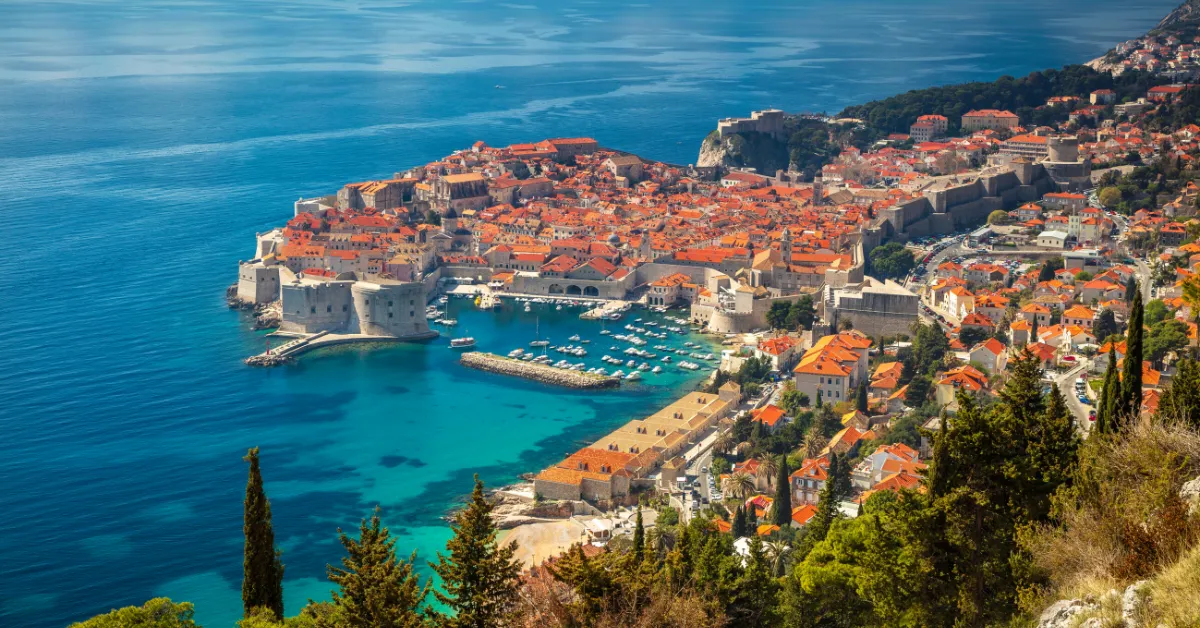
Final Thoughts On Best Places To Live In Croatia
With such a diverse list of best places to live in Croatia, you’ll find your perfect home, whether you prefer bustling cities, coastal towns, or small islands. However, your working situation will determine which city in Croatia is best for you.
If you’re looking to pick up a local job, Zagreb is best, but if you work remotely, you can enjoy the quieter towns and islands like Hvar or Pula.
Not sure if Croatia is the right place for you? Read one of the following guides:

















.png)


Discussion about this post